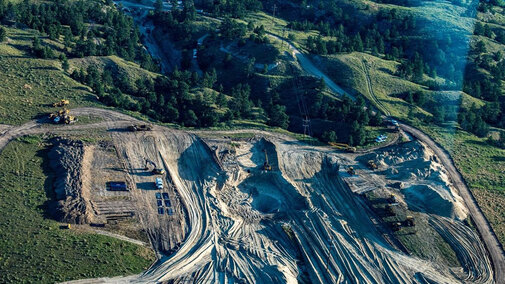
-

Figure 1. "This is where we started following the July 17 tunnel collapse ...," said Rick Preston, Gering-Fort Laramie Irrigation District General Manager, when showing a photo history of canal repairs to stakeholders this week.
-

Figure 2. "And this is where we are today." Contractors are in the process of removing as much soil as possible from above the tunnel collapse to get down as close as possible to the top of the tunnel.
-
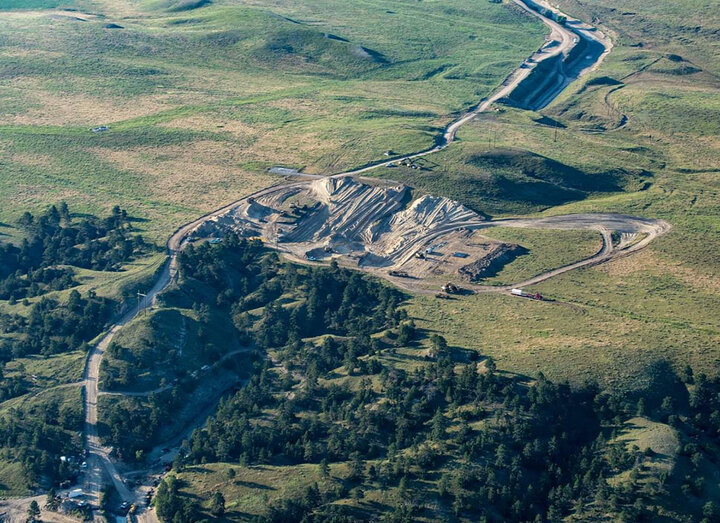
Figure 3. In the top right of the photo, you can see where the above-ground canal goes underground, entering the tunnel. In the lower left area, amid the trees, the tunnel ends, returning to surface water flow from which irrigators draw water. -

Figure 4. The soil is being removed so trench boxes can be installed to hold back dirt from collapsing around the current hole, providing safety for workers. Contractors were removing approximately 35,000 cubic yards of dirt daily.
-

Figure 5. Heavy machinery was brought in to repair the canal bed and walls and to move soil back into the canal to bring the canal bed up to its previous height. Canal repairs were completed prior to Aug. 12.
-
Figure 6. Entrance to the Gering-Ft. Laramine-Goshen canal tunnel.
-

Workers eye the first and smaller collapse in the tunnel, a 5-foot hole in the ceiling that allowed dirt to fill in the tunnel. It occurred about 40 feet before the main collapse, which is approximately 625 feet in from the north tunnel entrance.
-
Before they begin excavation, workers install metal ribs to support the tunnel walls and "dam" up the dirt as a safety precaution, moving the dam further into the tunnel as they excavate more dirt. One of the challenges to their work has been water in the tunnel, which has complicated soil removal. The source of the water is unknown at this point. If it's coming from a crack in the tunnel walls or flooring, repairs will take significantly longer and delay restarting waterflow.
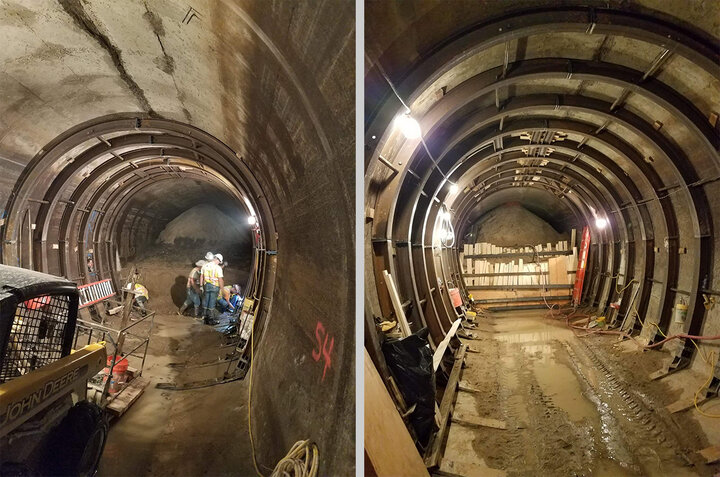
caption
-
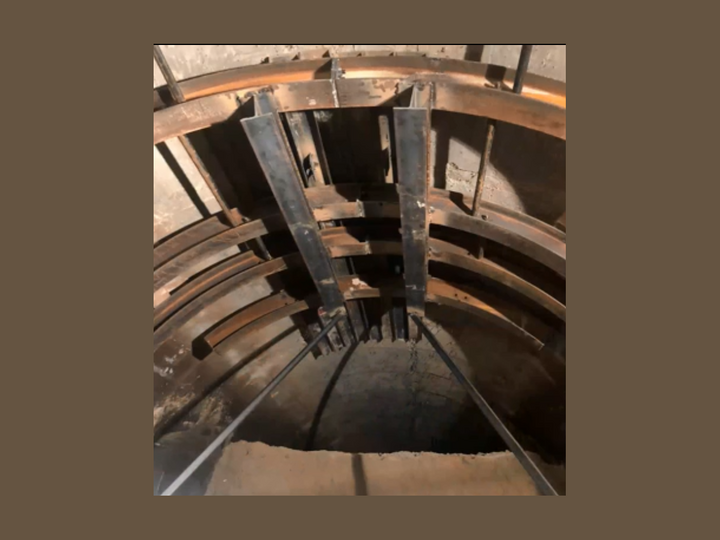
Workers installed a form at the top of the tunnel and poured a patch for the five-foot hole.
-
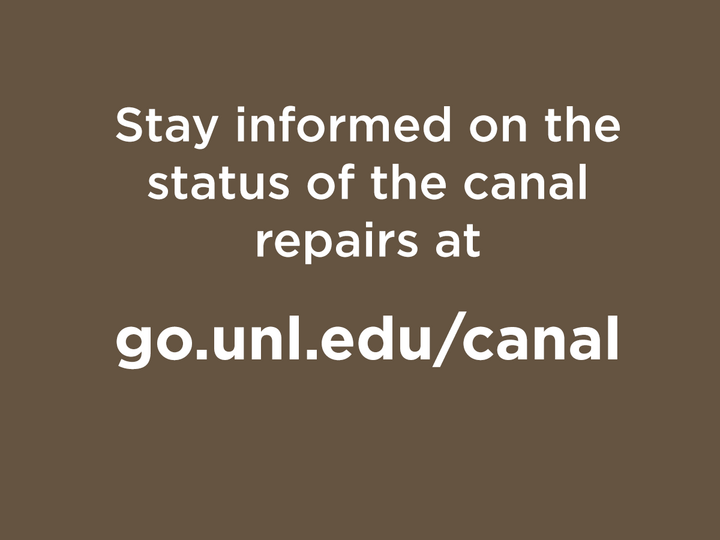
Repairs to the Gering-Fort Laramie-Goshen irrigation canal and tunnel are progressing, although it’s still too early to determine when water flow will be restored, growers were told Monday at stakeholder meetings of the Gering-Fort Laramie and Goshen irrigation districts. Surface-water irrigators in the North Platte River Valley south of the river in eastern Wyoming and western Nebraska lost their water supply due to a tunnel collapse and a washout in the main supply canal just south of Fort Laramie, Wyoming.
Nebraska Extension provided the venue for the Gering-Fort Laramie Irrigation District meeting at the Panhandle Research and Extension Center in Scottsbluff. The University of Wyoming Extension / Eastern Wyoming College provided the venue for the Goshen Irrigation District meeting with approximately 150 in attendance at each meeting.
The majority of the audience were patrons of the irrigation districts. In addition, both meetings were attended by several dozen elected officials and local, state, and federal agency staff. They included county commissioners, state legislative representatives and aides, congressional aides, local USDA staff from the Farm Services Agency and Natural Resources Conservation Service, Nebraska and Wyoming Extension, and others.
At the Scottsbluff meeting, GFL Irrigation District General Manager Rick Preston updated the audience on progress of the repairs and possible funding sources and thanked the community for their support. It has been “a mental strain, an emotional strain, and a physical strain on everybody involved. Your continued support, encouragement, and trust go a long way in helping us conquer this situation,” he told the crowd.
Following is a recap of what Preston reported.
Repairs to the canal bed and walls are now complete and the canal is ready for water when tunnel repairs are complete.
The contractors have been removing soil on top of the hill where the crater formed above the tunnel collapse in order to enlarge it and help prevent any more material from entering the tunnel. At the time of the meetings, the excavation contractors were approximately 40 feet from reaching the top of the tunnel collapse. The tunnel is approximately 100 feet below the soil surface.
Once they believe they are within 20 feet of the tunnel, trench boxes will be installed to help prevent soil from flowing back into the excavated area as they remove the final material to get to the tunnel. Once the trench boxes are in place, work can continue in the tunnel to assess the damage to the tunnel from the larger collapse site. The soil excavation contractors have been working from sunup to sundown in two shifts.
Work on the inside of the tunnel also has progressed. The first smaller collapse site has had steel “ribs” or supports installed and a 5-foot hole in the top of the tunnel has been patched with concrete.
Crews now have started working on the second, larger collapse site in the tunnel, approximately 675 feet from the tunnel entrance. The contractors can see a hole approximately 8 feet wide. The main concern now is whether the tunnel walls are still intact at this site. The extent of the damage at the larger tunnel collapse will determine how soon water can flow again.
If repairs can be made, the irrigation districts hope to make a trial run to see how much water will flow through the tunnel with the new repairs and supports in place. This will also allow growers to irrigate their fields once prior to winter and help fill the soil profile. The irrigation districts are working with the Bureau of Reclamation, which operates the North Platte Project, to extend the irrigation season, which usually ends in mid-September.
The irrigation districts have obtained a $4 million loan from the Bureau of Reclamation to help pay for these temporary repairs. The loan is for 50 years at 3.125% interest. Both irrigation district boards are working together to find a long-term solution to the problem and funding sources.
When Preston was asked about a final, long-term solution for this and other irrigation canals and tunnels, he said engineers were currently looking at the costs and viability of one option: a sleeve that would be inserted in the tunnel. The structural integrity of other irrigation tunnels in the area will also be assessed.
More Information
Nebraska Extension and the University of Wyoming Extension are working together to share information and help growers in both states understand their options during this severe situation. A joint web page has been created to provide information to stakeholders.
Potential Economic Impact of Tunnel Collapse is $89 Million, an August 15 story linking to Economic Impact Analysis of the Goshen/Gering Ft. Laramie Canal Failure
Crop Insurance Question for Those Affected by Canal/Tunnel Collapse
Please see https://cropwatch.unl.edu/tags/canal-irrigation for additional stories.
For more information on the North Platte River and the irrigation projects in Nebraska and Wyoming, visit the Slideshare presentation on the University of Nebraska Panhandle Research and Extension Center website.
//